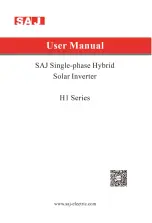
6
6. Setting the stop positions of the Servos
Using the address setup in step 4 the servo can now be moved to stop position
“red” with the red solenoid key. With the help of the [+] and [-] keys, specified in
step 5, the stop position of the Servos is adjusted accordingly. For this press the [+]
or [-]-key is repeatedly pressed as until the desired retaining position is reached.
With the green solenoid move the servo to the stop position "green" as described
above.
When desired positions are fixed the servo must be switch to the "red" and "green"
stop positions 3 times (thus red-green-red-green-red-green) without changing the
setting, in order to go to the next programming step (keys in accordance with step 4).
7. Setting the speed of the Servos
The servo now moves independently back and forth with the set speed between the
two stop positions. The speed of the movement can be increased or decreased with
the [+] and [-] keys, as specified in step 5.
8. Terminate Programming
When the desired speed is adjusted one of the two keys which change the servo
position is operated, (keys in accordance with step 4).
Programming for this servo output is complete and the servo decoder is ready for
the programming of the next output. The selected settings are permanently stored.
Note: If the programming is terminated prematurely, as in the track power is
switched off, then the selected settings are stored.
CV Programming with DCC Devices
The decoder can be programmed with the Intellibox and any DCC center that
permits 3 digit numerical values. Use the programming menu of your DCC center to
select and program the decoder CVs. The exact process will be outlined in the
center’s manual.





























